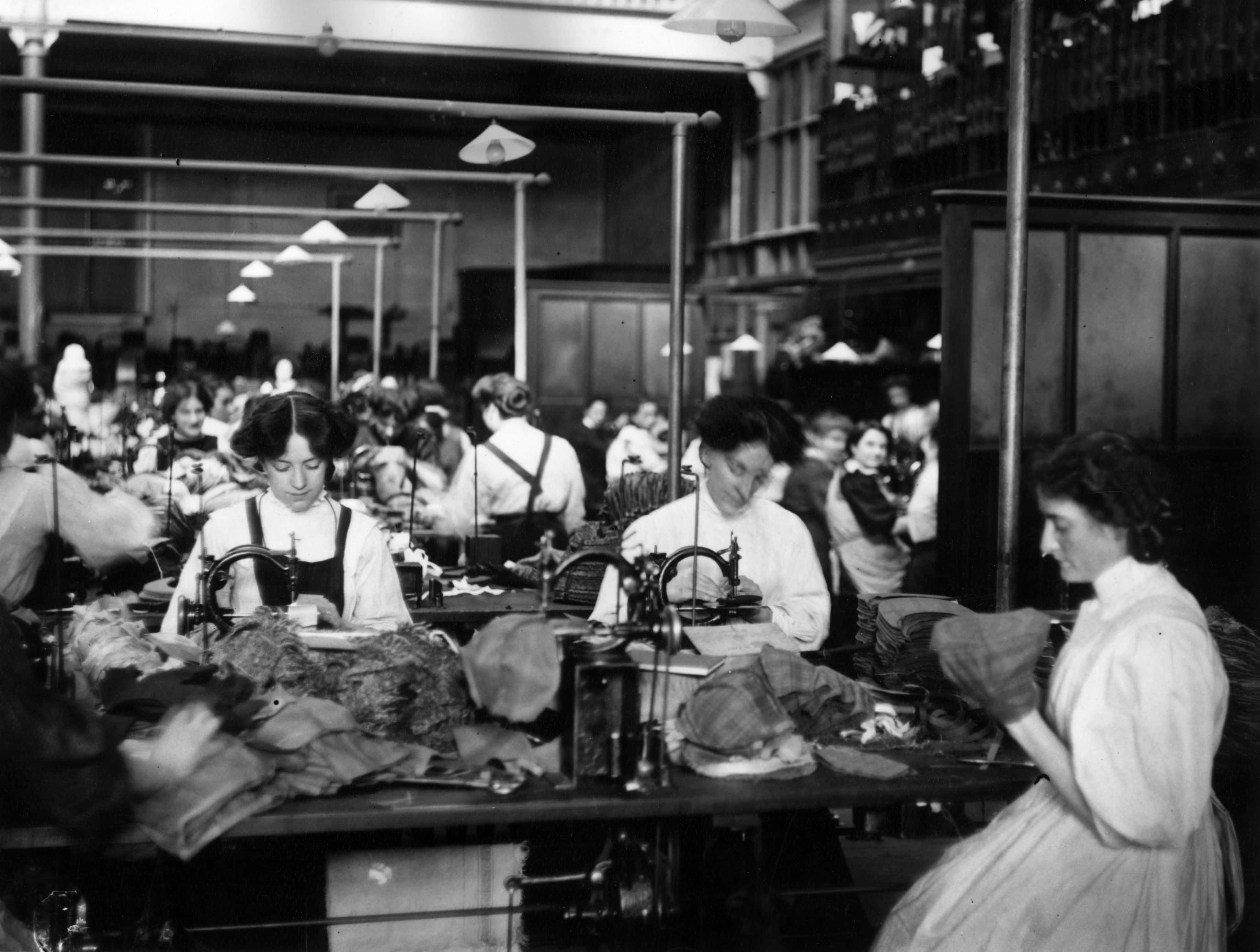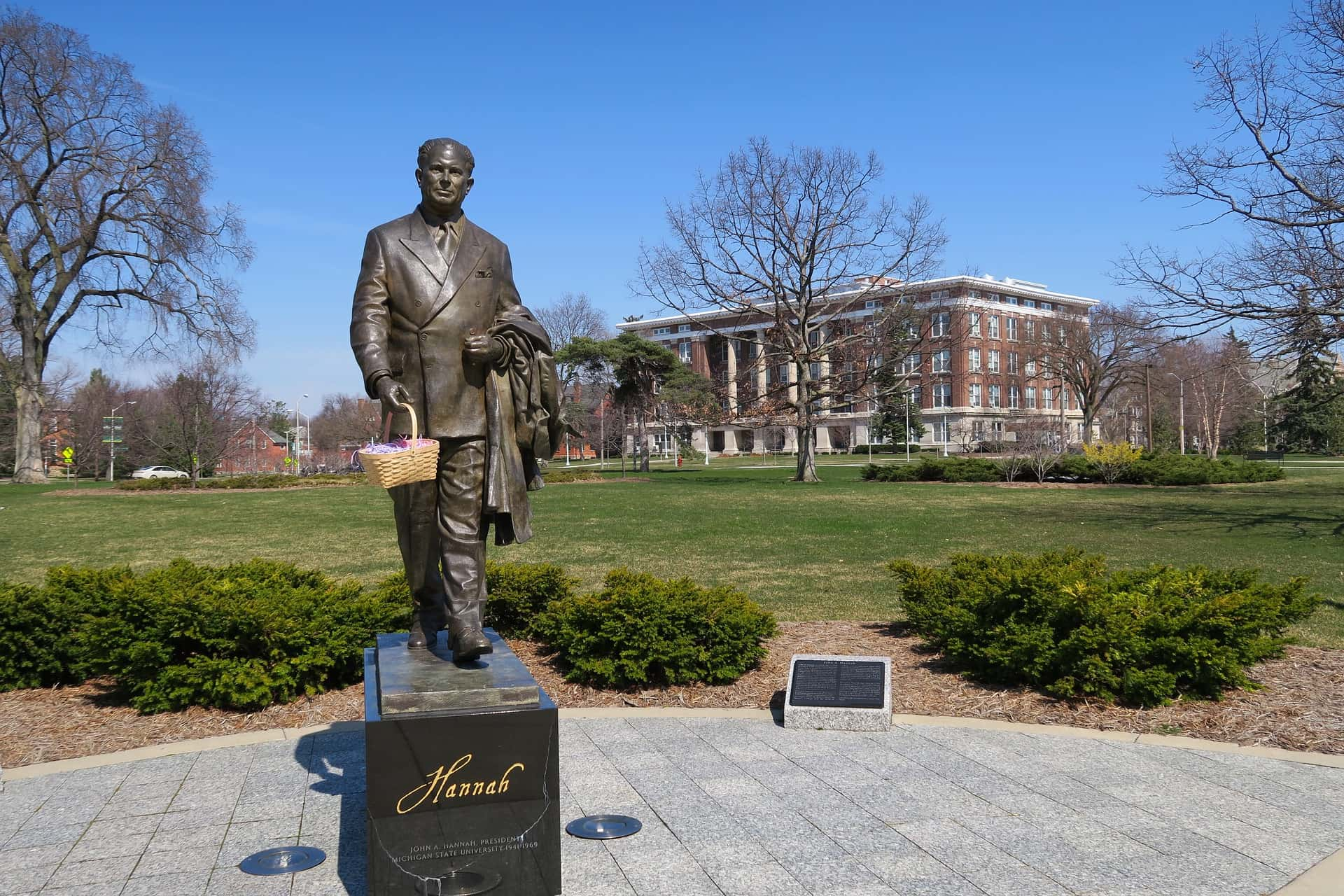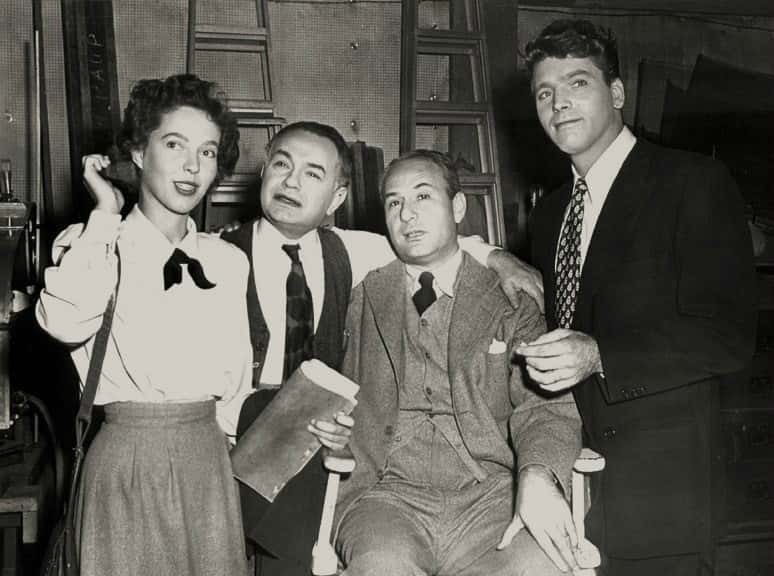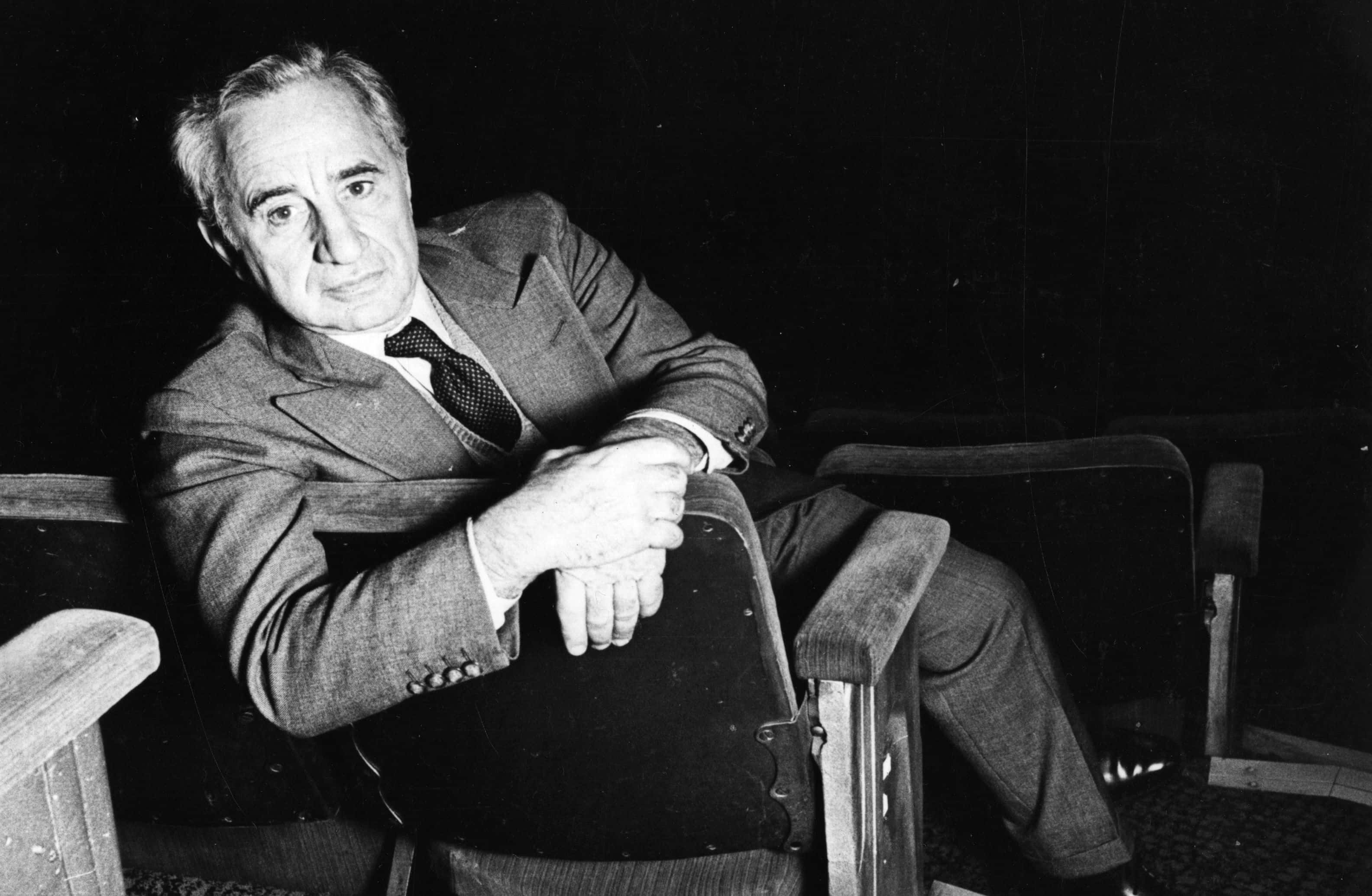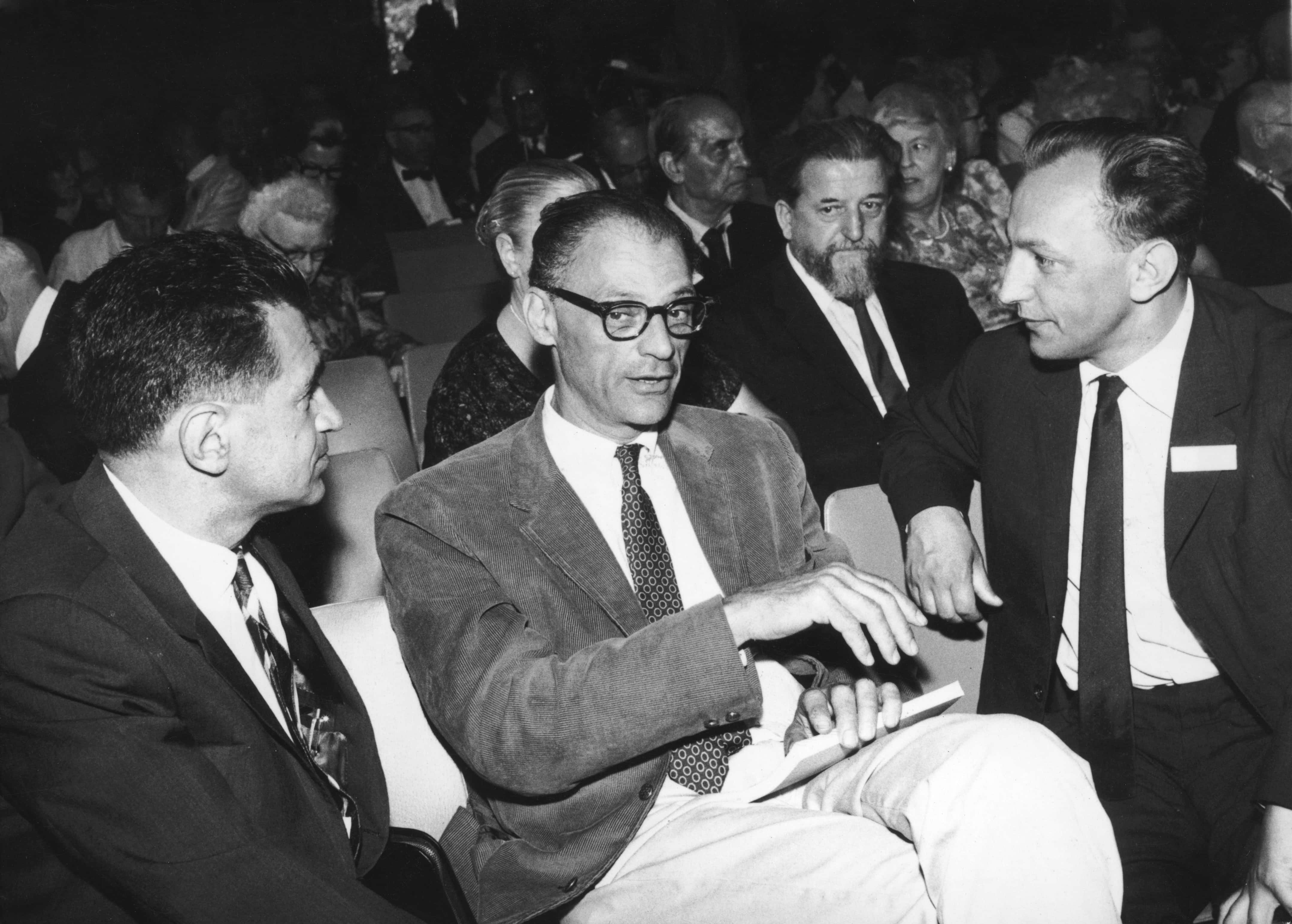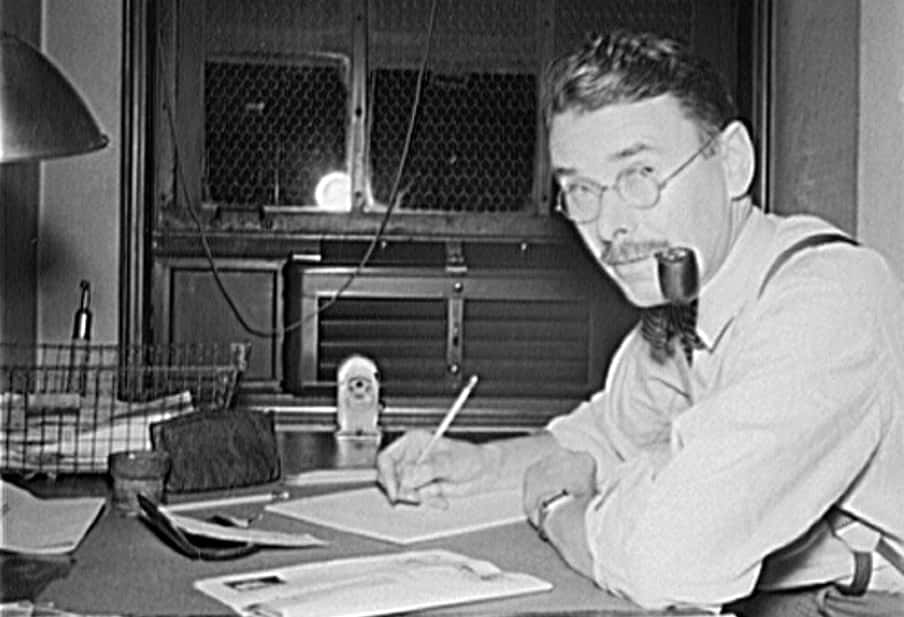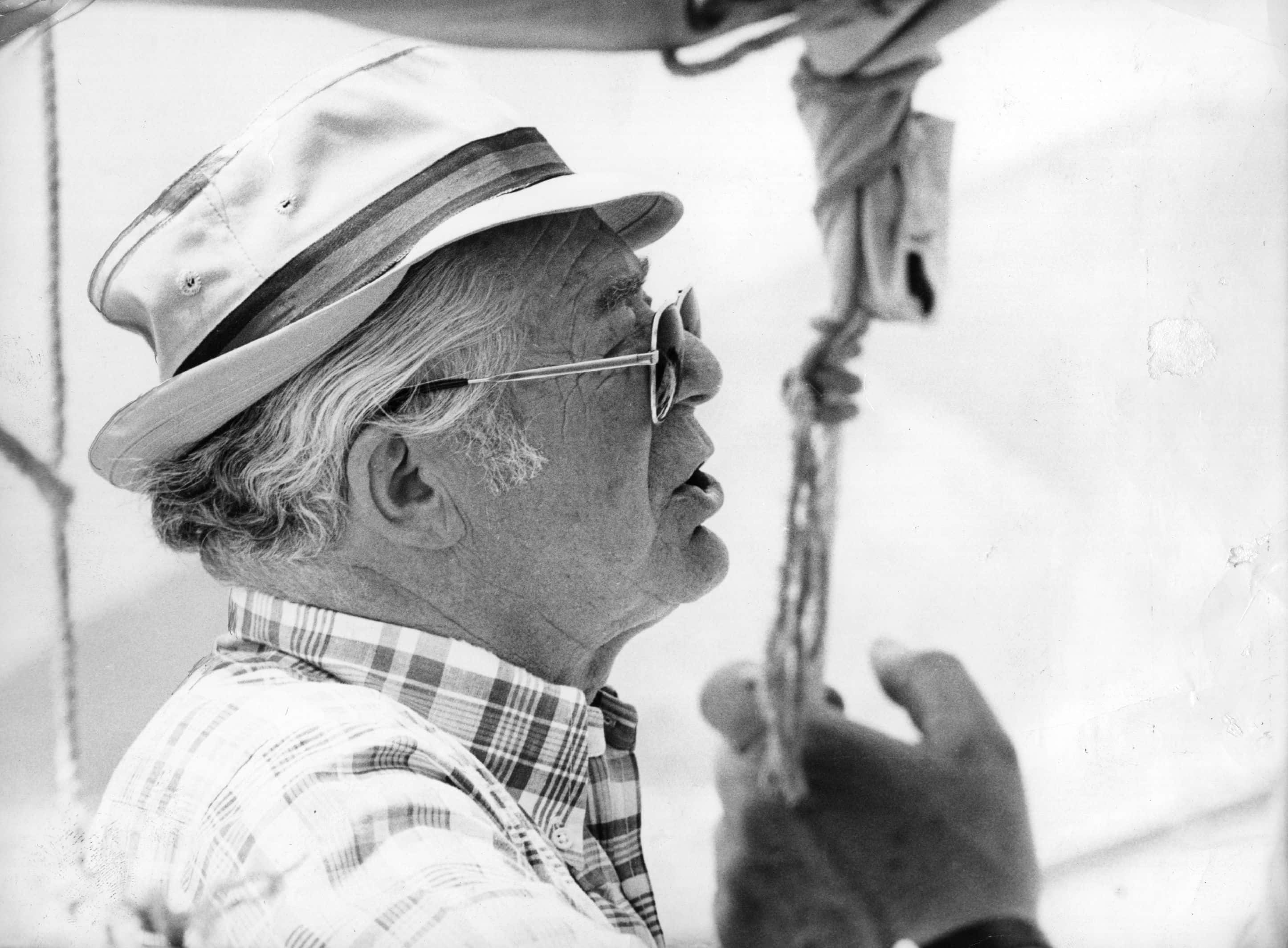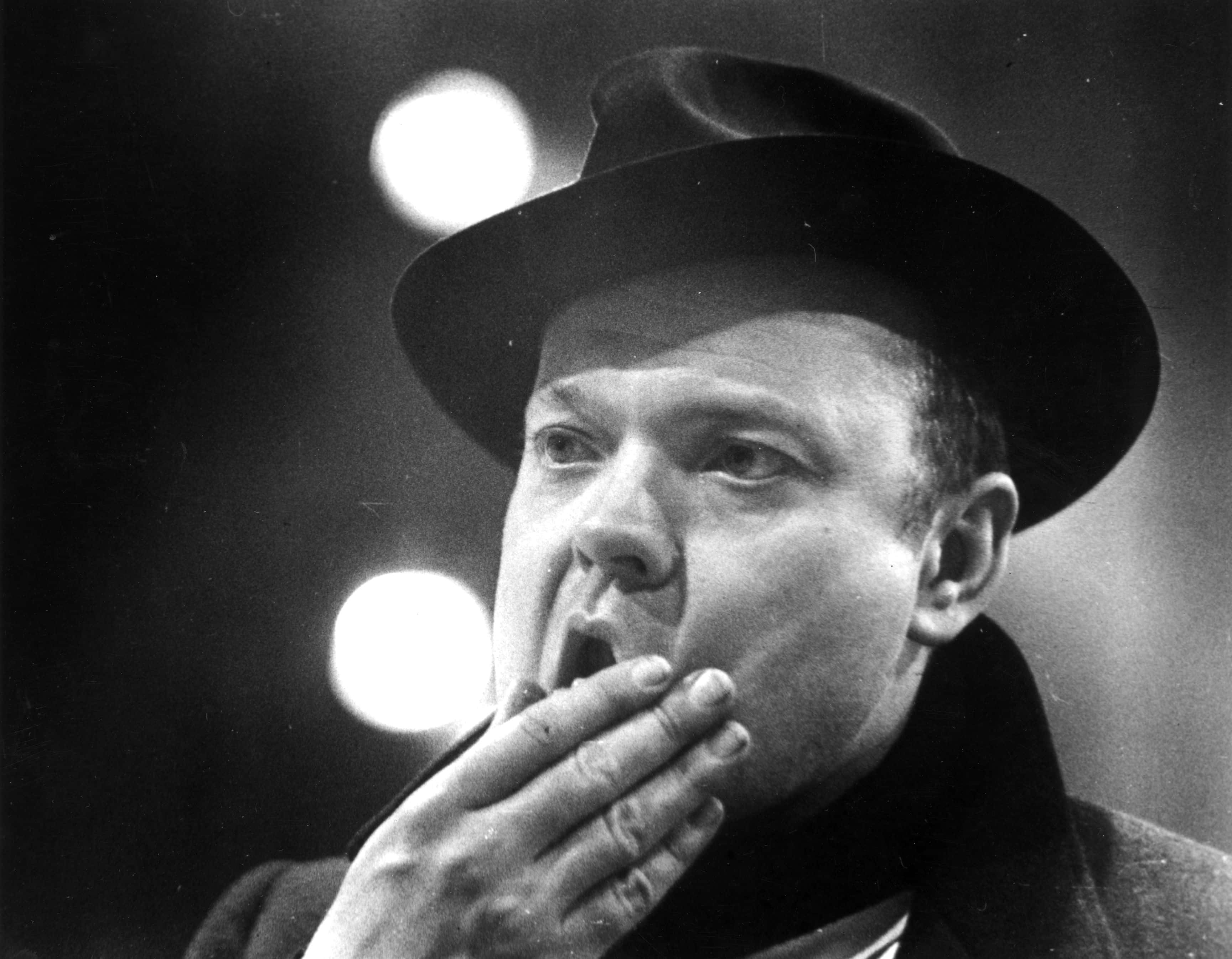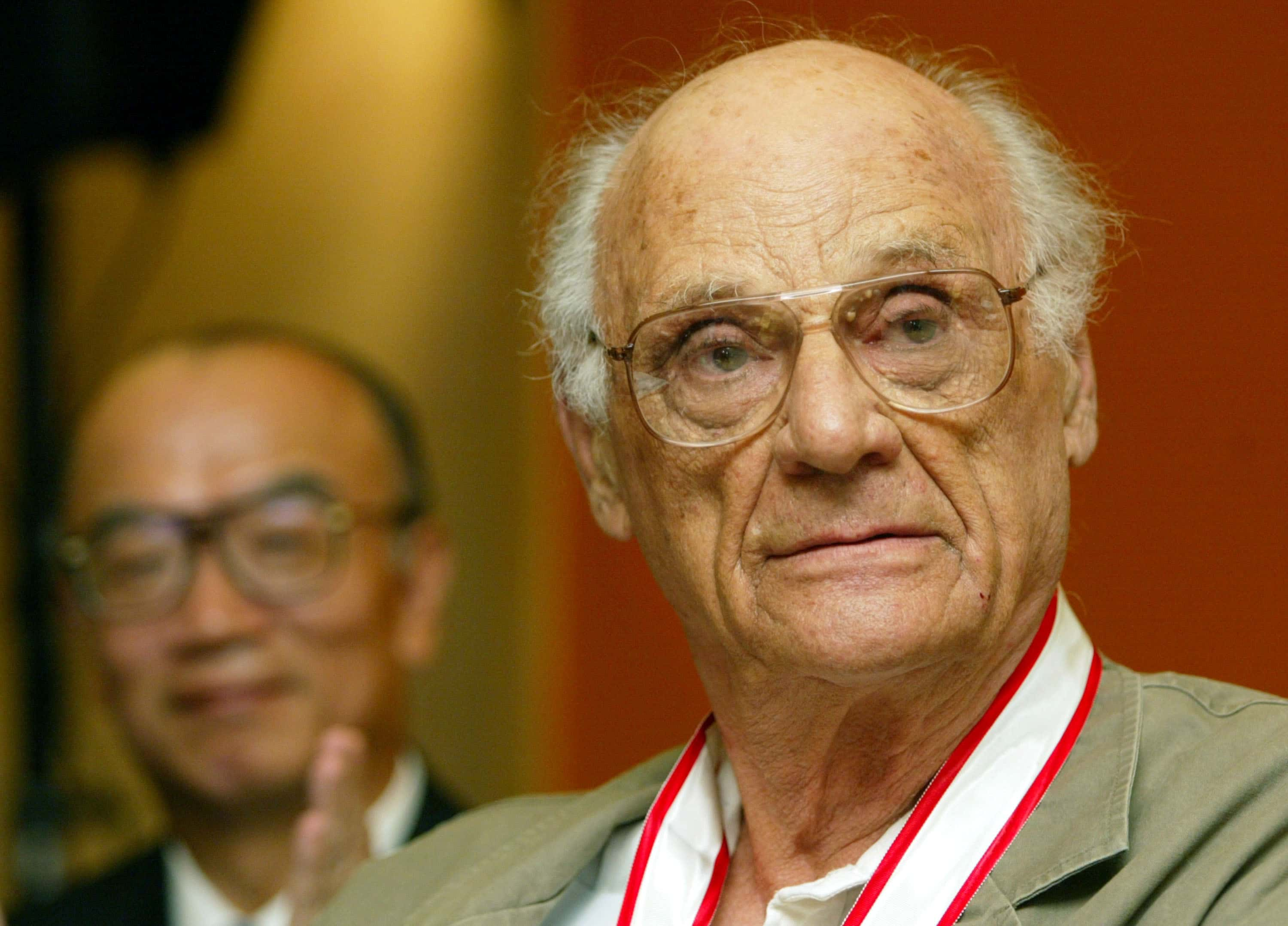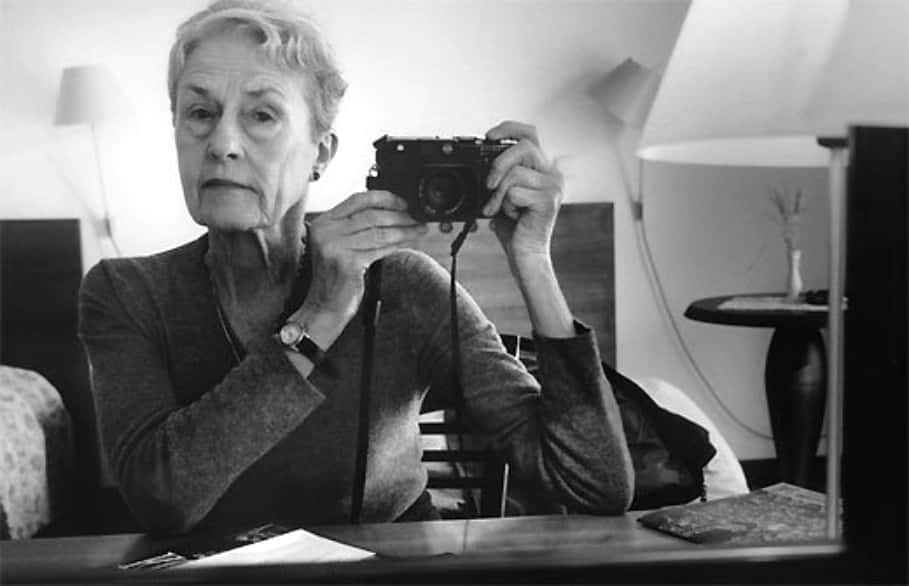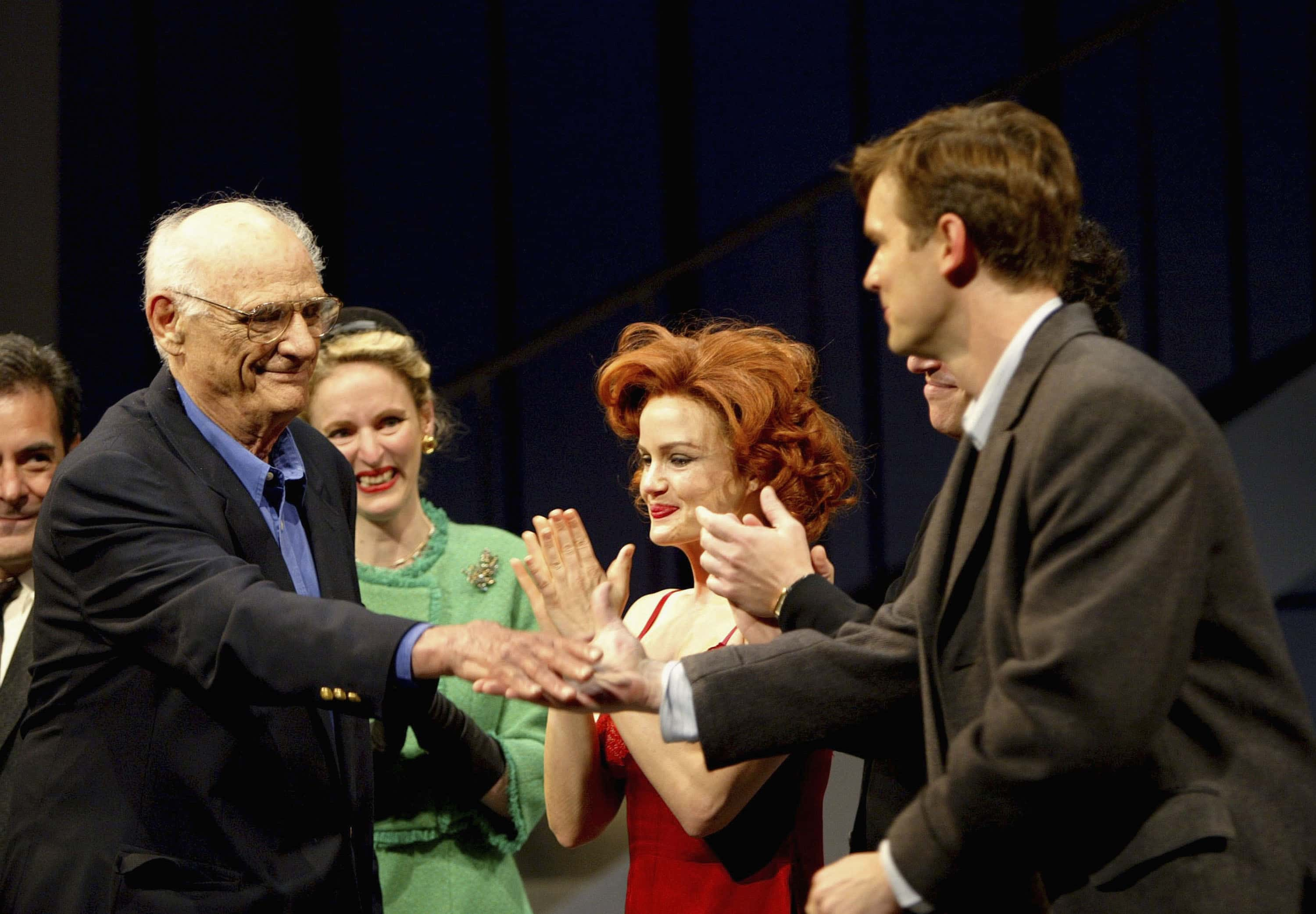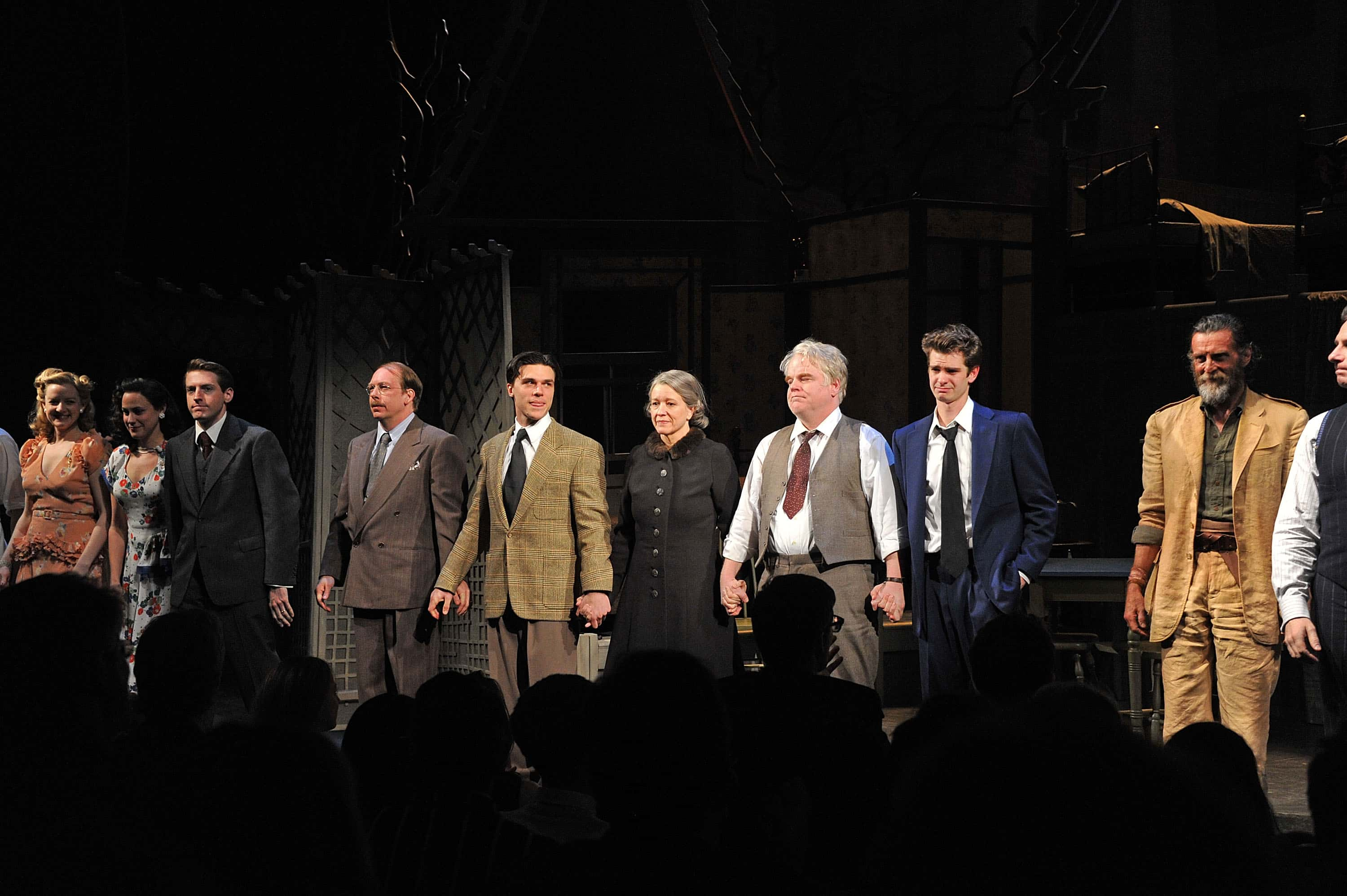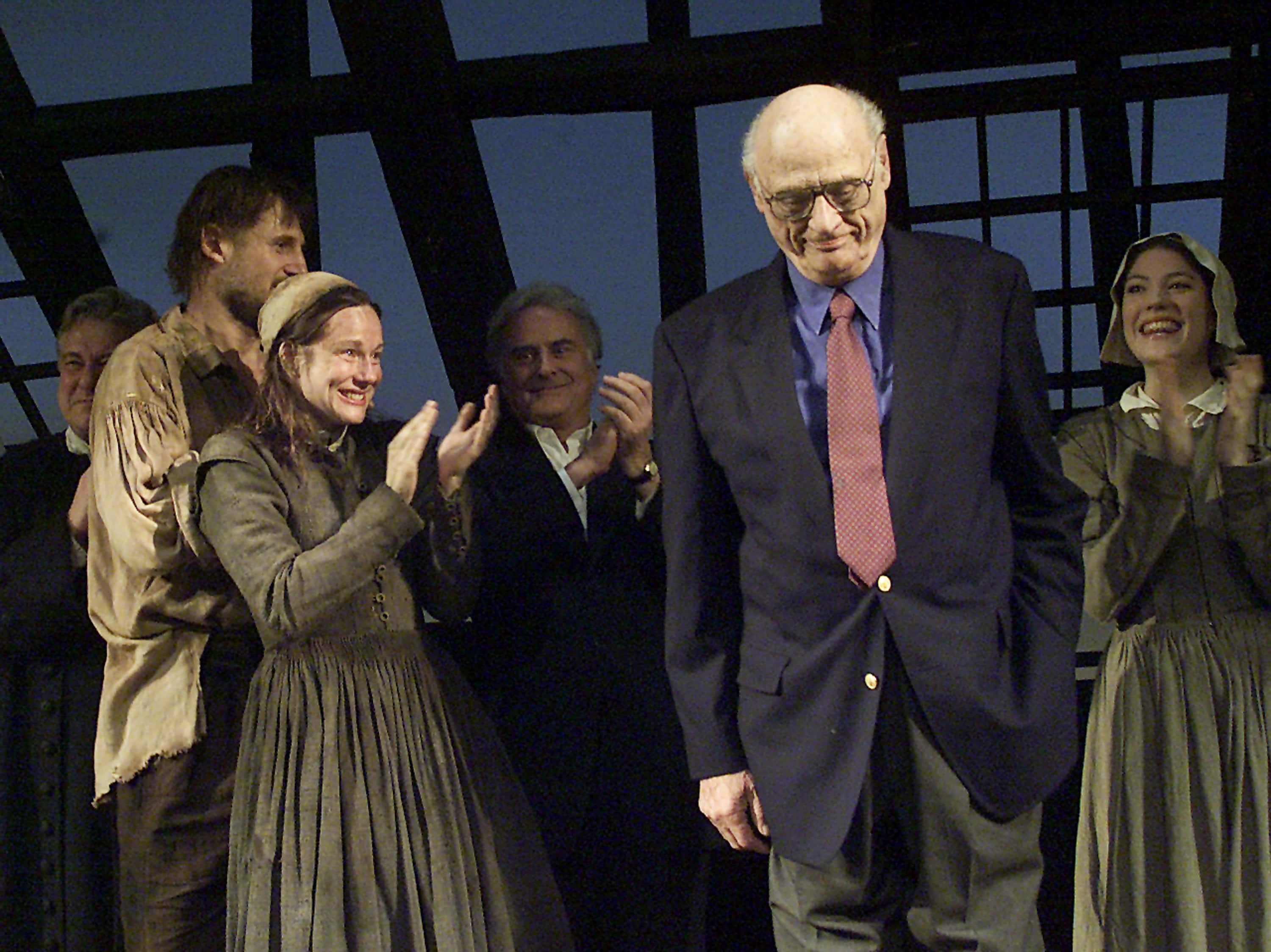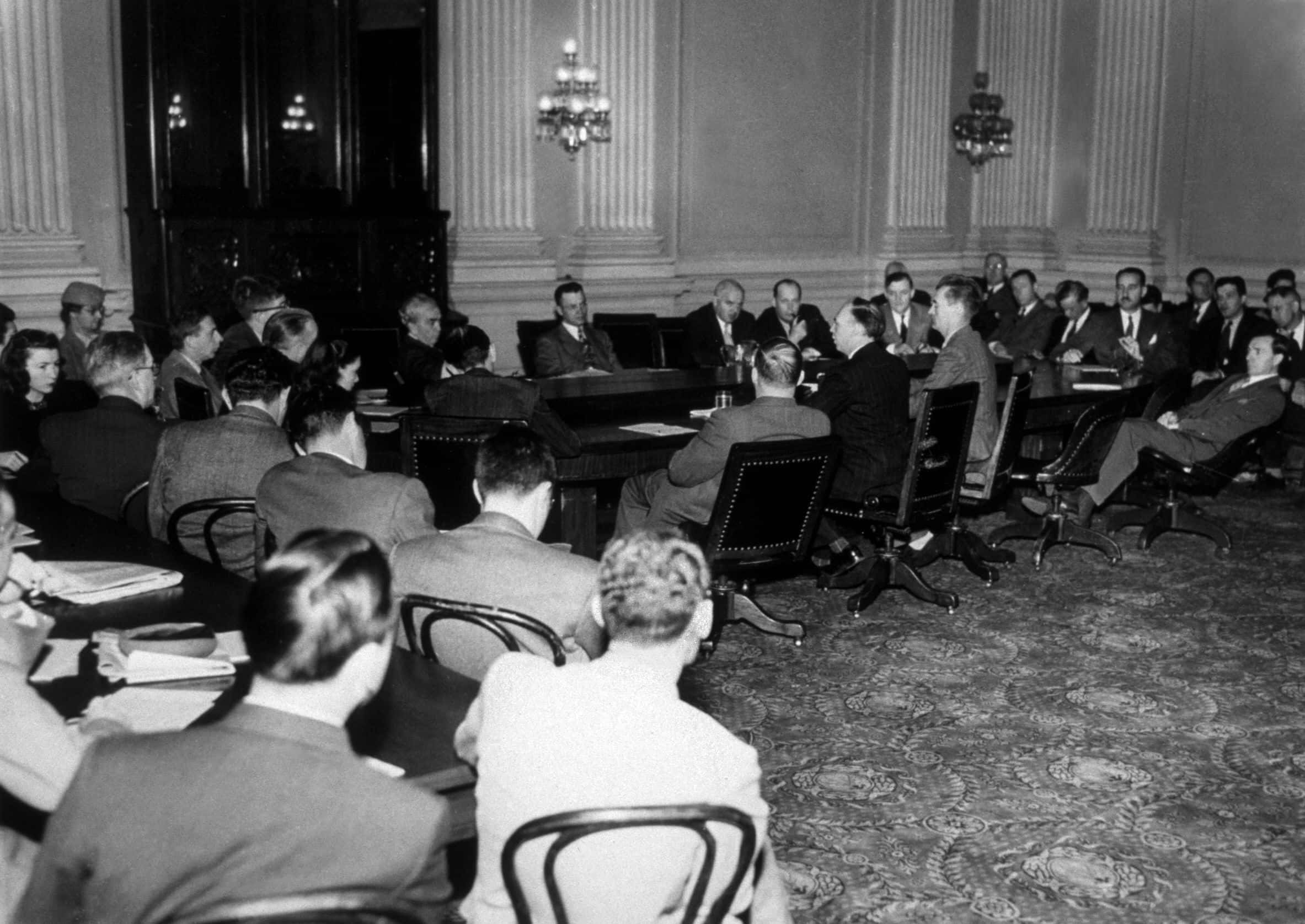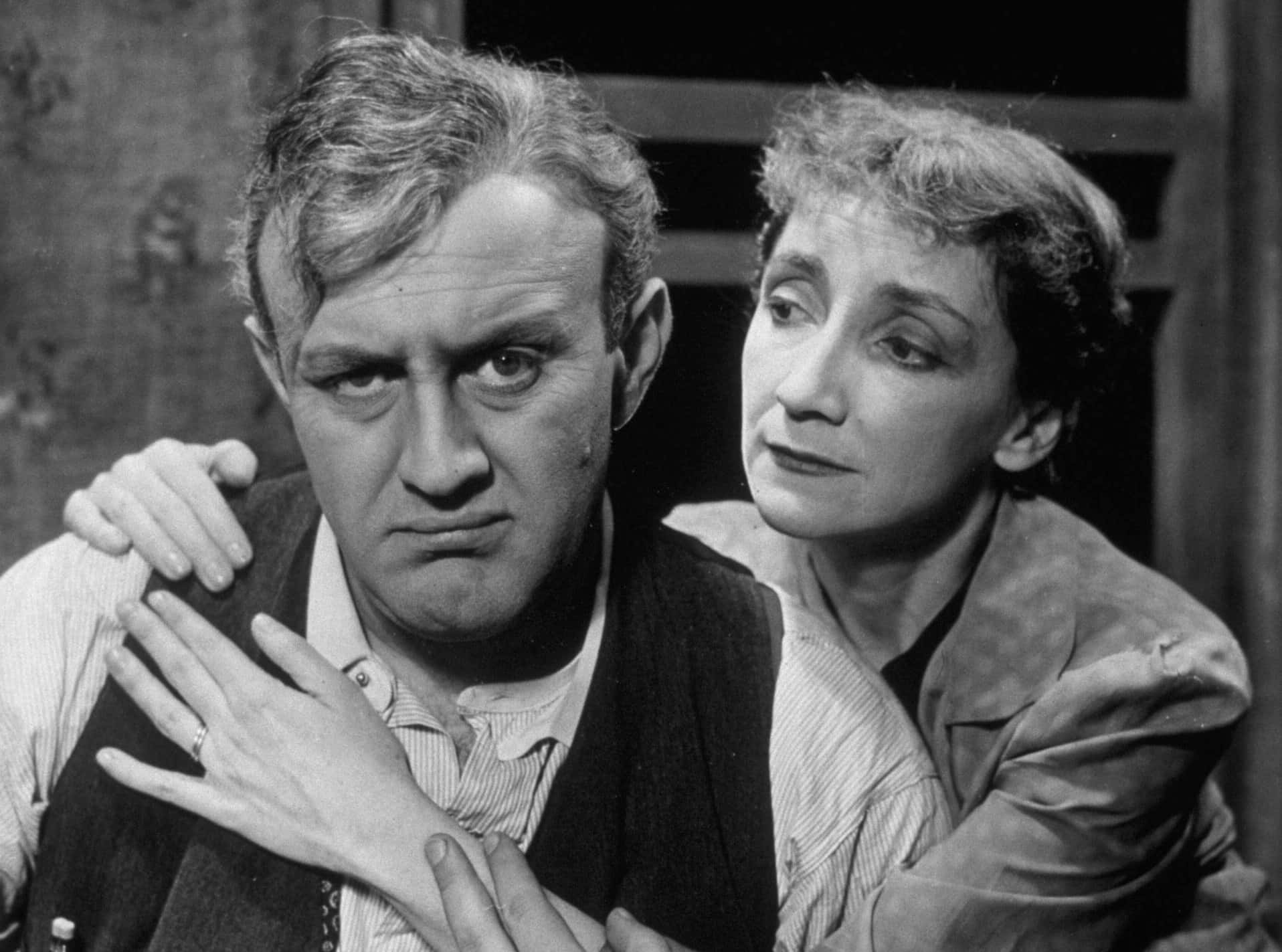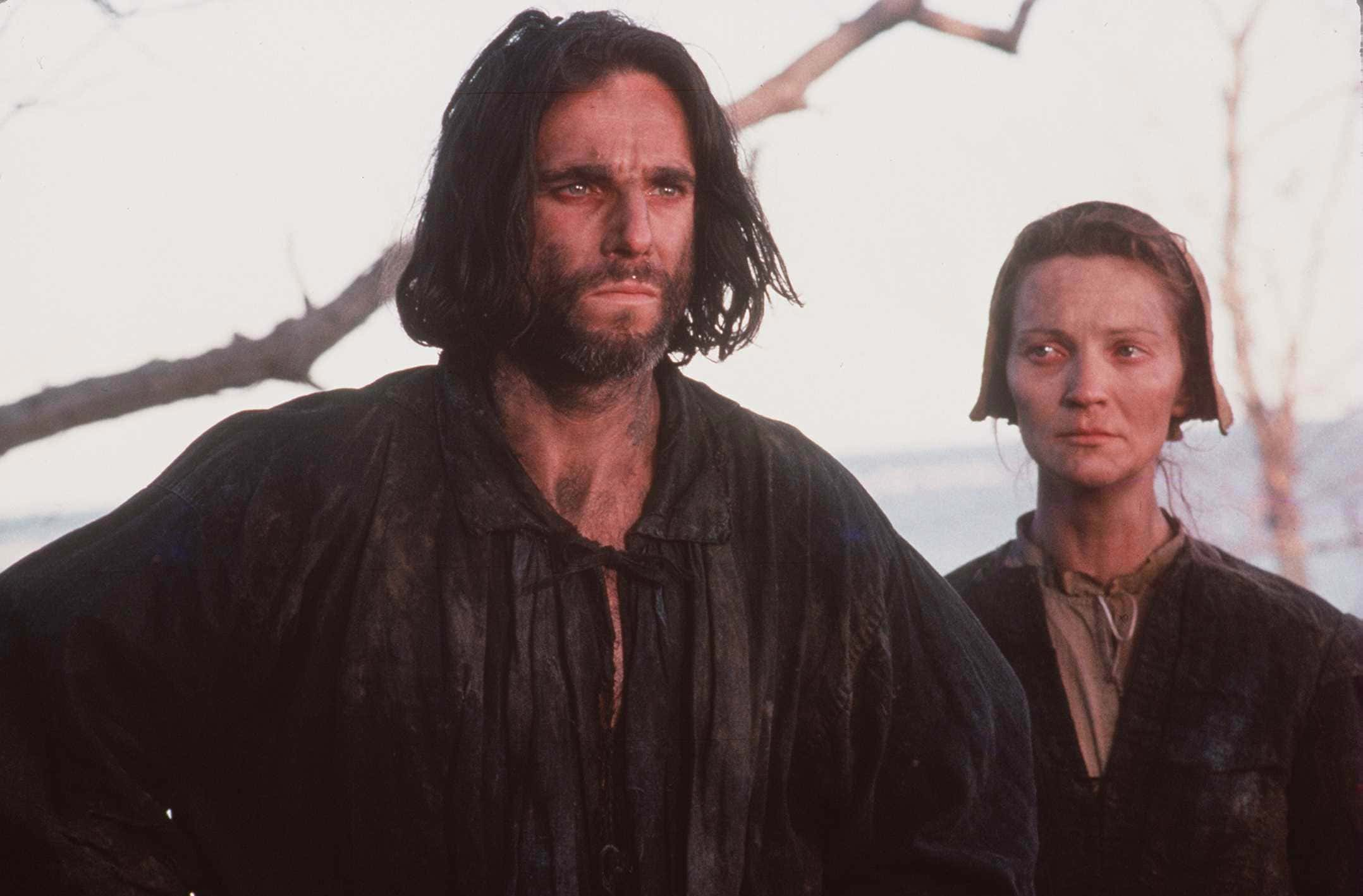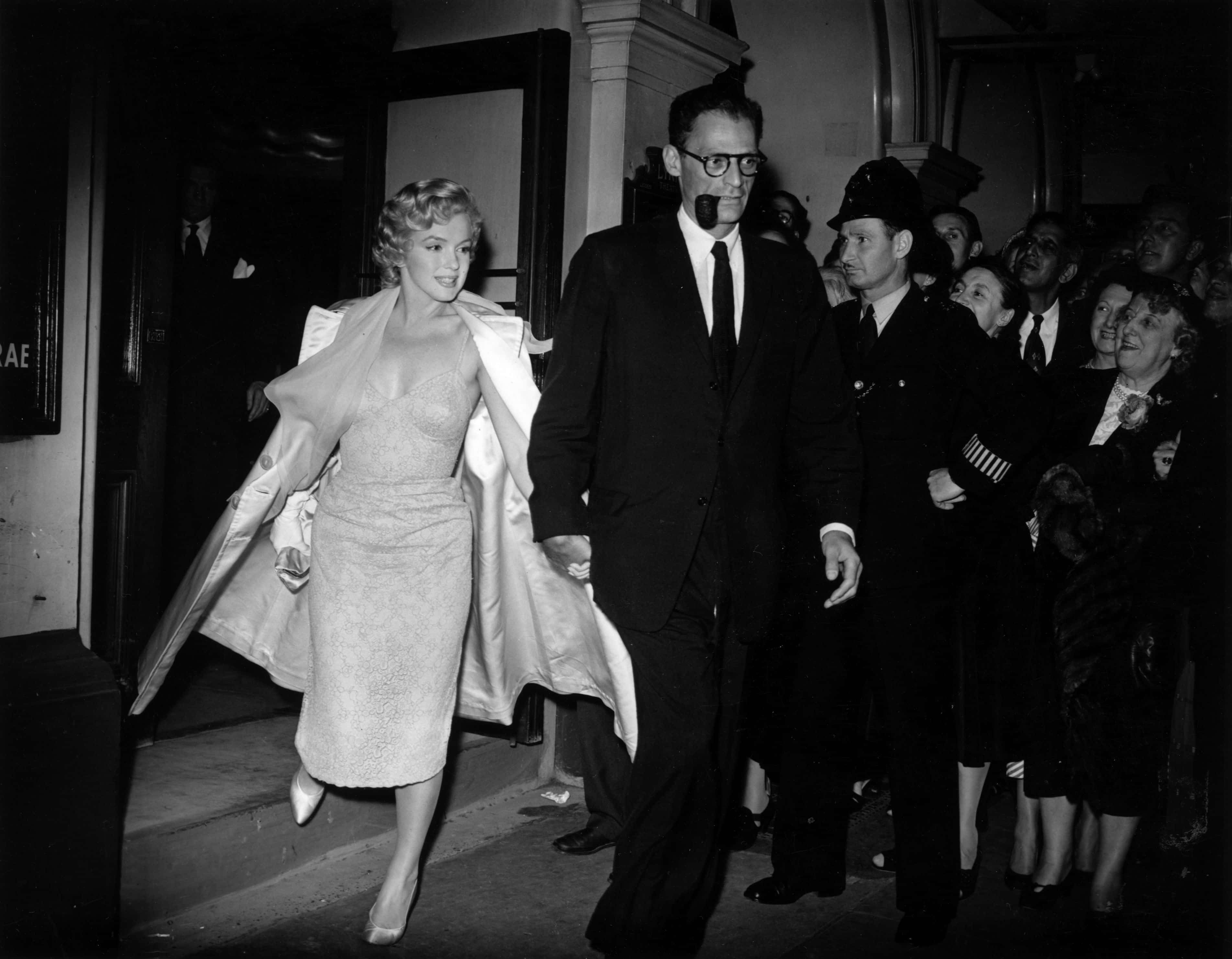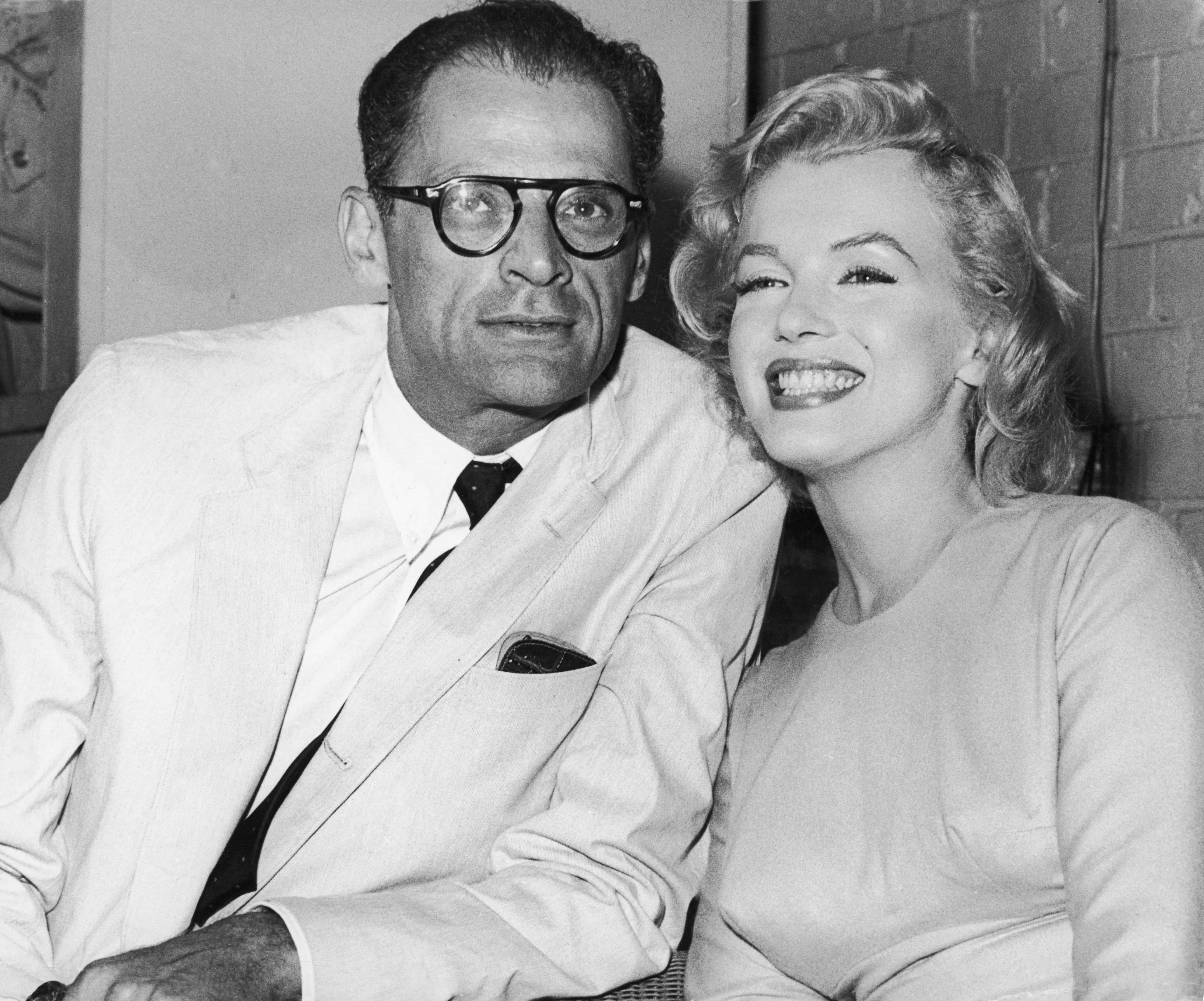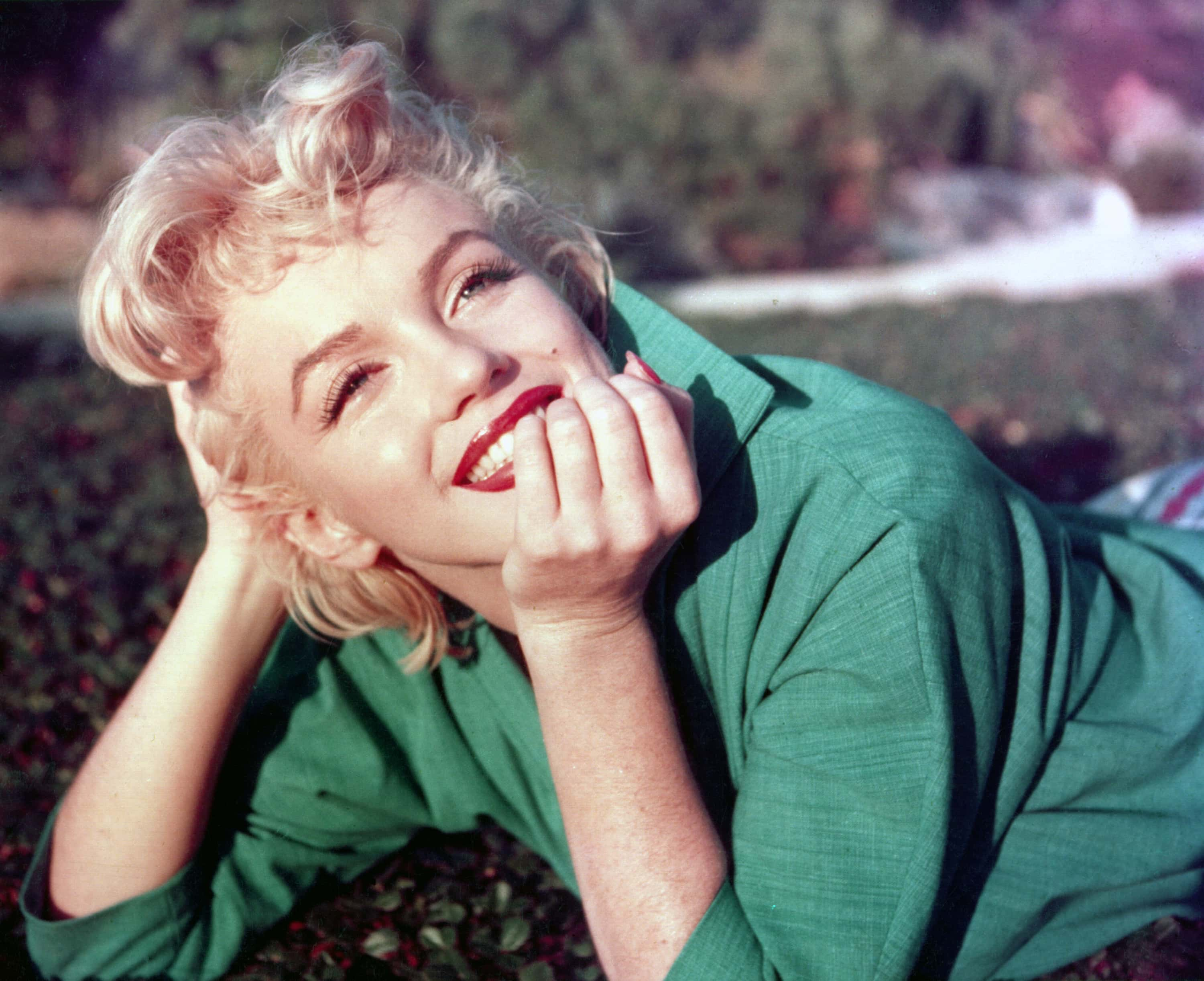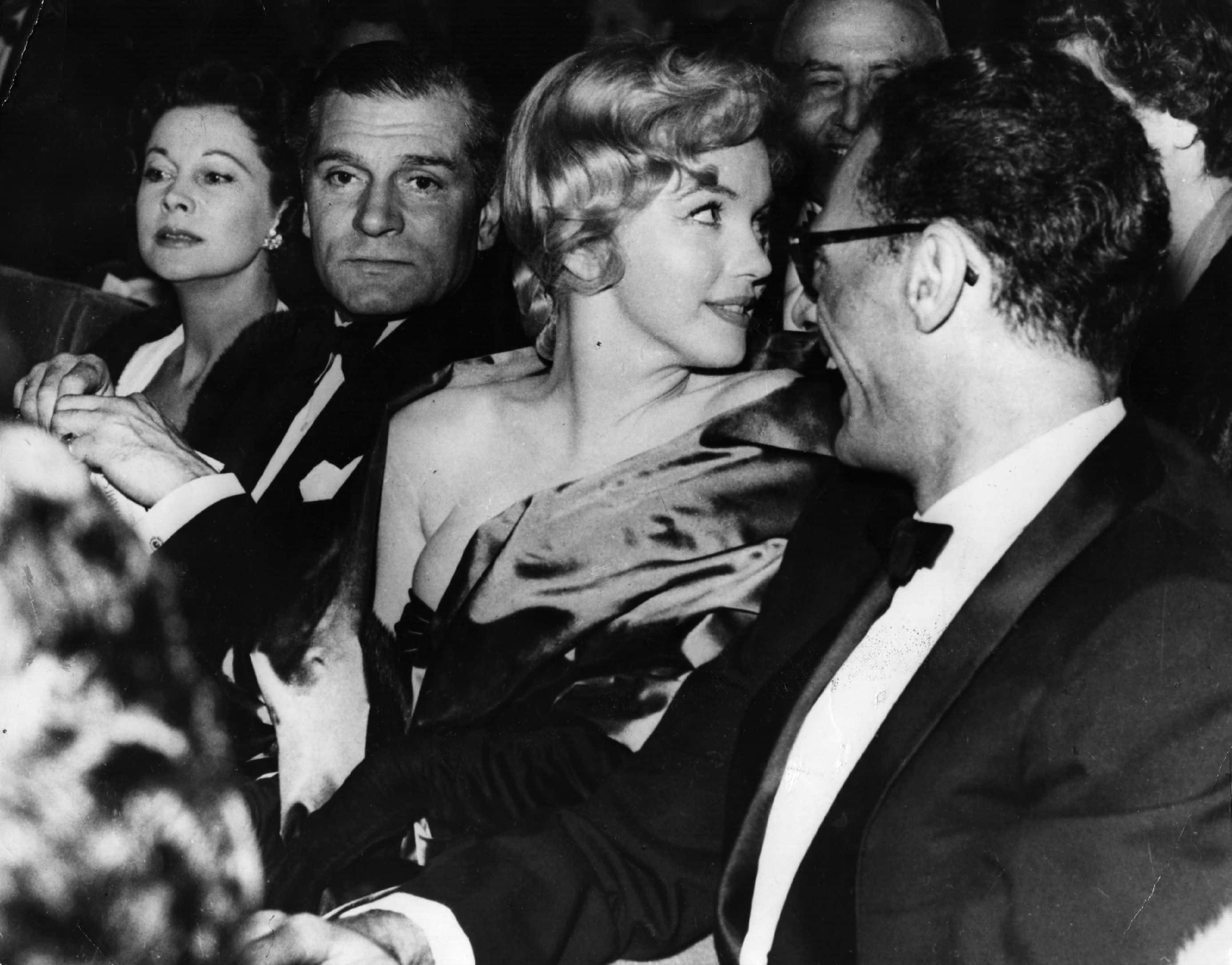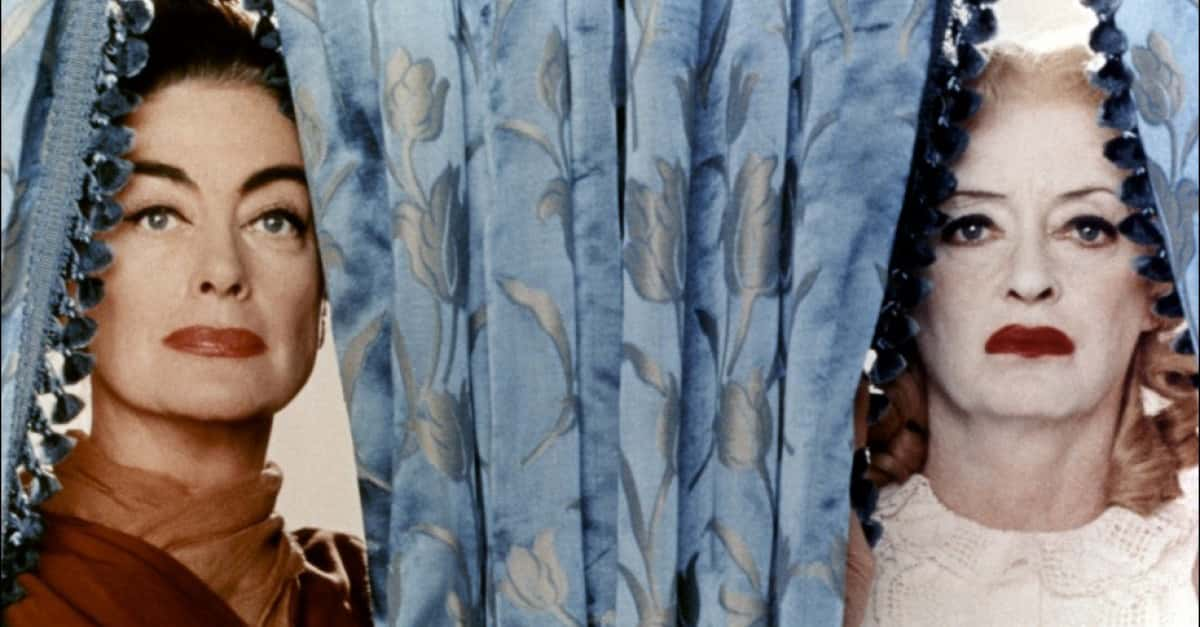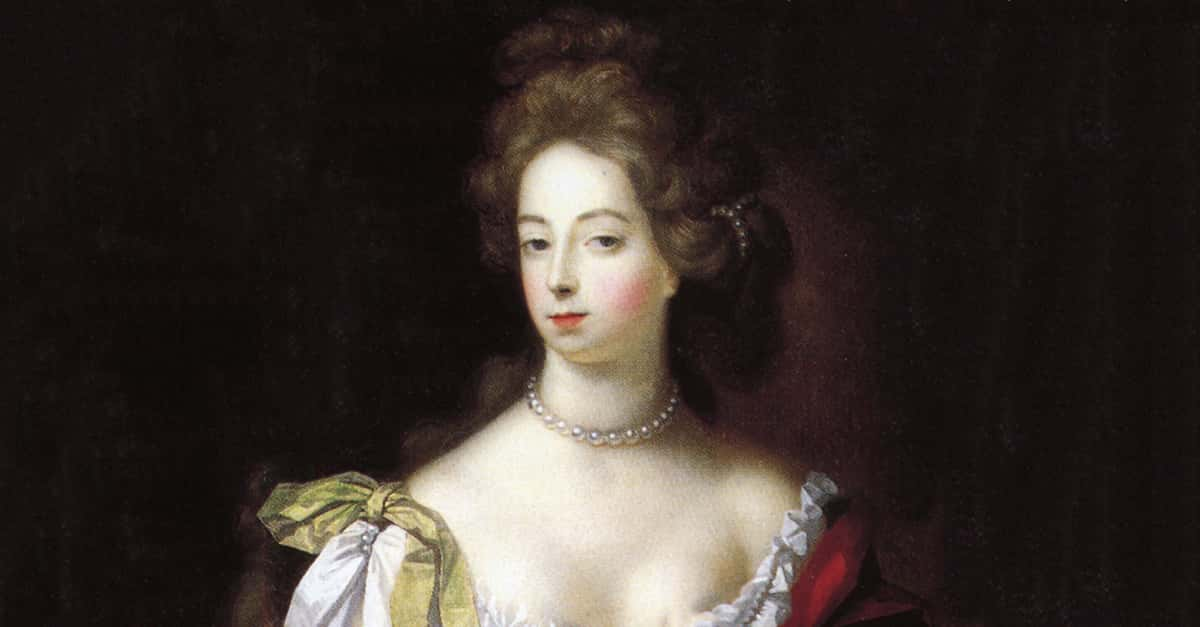“Maybe all one can do is hope to end up with the right regrets.”—Arthur Miller
Arthur Miller has long endured as one of the greatest playwrights in American history, but the stories of his tempestuous personal life have always threatened to overtake the reputation of his written works. In between a marriage to one of the most famous actresses in film history and his conflict with the US government, Miller also penned plays which remain highly relevant to this day. Whether he set his plays in the past or present, he was always interested in the common people, whose mundane and ordinary lives were made extraordinary. In case you’re behind on your knowledge of this famous man, we here at Factinate provide you with this list of facts, as we do best.
Arthur Miller Facts
42. Welcome to the World
Miller was born on the 17th of October 1915 in New York City. He was the middle of three children to Isidore and Augusta Miller.
41. Living the Good Life
Miller’s early childhood was very privileged. His father, Isidore, had immigrated to the United States from Poland and ended up owning a women’s clothing manufacturing business. The business took off, with 400 employees at its high point. This success led the Millers to live in Manhattan with a chauffeur and a summer house.
40. Entering the Work Force
Miller’s privileged upbringing came to an end with the Wall Street Crash of 1929. His family’s fortunes vanished, forcing them to relocate to Brooklyn. While Miller continued his education, he would take up jobs like delivering bread in order to do his part for the family income.
39. On Second Thought…
After working several jobs to save up for his tuition, Miller attended classes at the University of Michigan. He initially majored in journalism and got work with The Michigan Daily, the student newspaper. However, after he wrote his first play (more on that later), Miller switched his major to English.
38. Sounds Awesome! No Thanks!
Following graduation in 1938, Miller was offered a chance to go to Hollywood and work as a screenwriter. Incredibly, Miller turned down this opportunity! Instead, he joined the Federal Theatre Project. This agency had been established by President Franklin D. Roosevelt as part of his New Deal policies to provide work for people in the arts. Much to Miller’s presumed frustration, the Federal Theatre Project was shut down in 1939 due to Congress’ suspicions of Communist infiltration in the art world. We have no idea whether Miller ever considered calling 20th Century Fox and reconsidering their offer, but we know it would have crossed our minds to at least try!
37. Cinematic Beginnings
Despite turning down that screenwriting job with 20th Century Fox, Miller did become an occasional screenwriter. The first film released which credited him as a screenwriter was the 1948 adaptation of his play All My Sons. While many of his films were adaptations of his plays, he did on occasion write specifically for the screen, such as with the film The Misfits.
36. No Big Deal!
Miller’s first play was No Villain, which he wrote in 1936 while he was still in college. The play follows an immigrant family who has fallen on hard times after their initial success. The play won Miller the Hopwood Award for drama, which was worth $250 (adjusted accordingly for inflation, that prize would be worth nearly $4,500 in 2018). Not bad for a play that was reportedly written in just six days!
35. From Stage to Screen
In a rare example of creative control, Miller was hired to adapt three of his own plays into films. These were the 1948 film All My Sons, two TV films based on Death of a Salesman (released in 1985 and 1996), and the 1996 film The Crucible.
34. Do You Want to Take Me Out?
One of the people whom Miller met when he was in university was a young woman named Mary Grace Slattery. Reportedly, they first met at a party where Miller immediately asked her out on a date. Interestingly, Slattery ended up paying for the movie they watched and the drinks afterward! They were married in 1940 and had two children together.
33. We’ll Go Far
Early on in his career as a writer, Miller became friends with director Elia Kazan. Kazan was a notable figure in the film and theatre industries, working frequently with such playwrights as Thornton Wilder, Tennessee Williams, and Miller himself. Interestingly, Kazan had a fling with Marilyn Monroe before she went on to marry Miller (more on that later). Miller and Kazan were also both very left-wing, though this would later prove to be the end of their friendship (more on that later too).
32. Bona Fide Hit
The first major success in Miller’s career as a writer was the play All My Sons. Written as Miller’s last attempt at making it big, the play is based on a controversial true story about defective aircraft engines being approved for military use despite being faulty. The play follows one of the men who approved this plan when the truth comes out about his criminal activity. The play was directed by Elia Kazan and premiered on Broadway in January 1947. The play was wildly successful, running for nearly 330 performances until 1949!
31. There but for the Grace of Brooks
Despite the huge success of All My Sons, Miller was always quick to point out that the play was nearly a disastrous failure. The play’s heavy subject matter and depressing atmosphere caused most reviews of the time to be especially negative about it. Miller blamed the fact that he released All My Sons in postwar America, when things were looking more optimistic than they had in a long time. The only person who gave a glowing review was New York Times writer Brooks Atkinson, which Miller claimed was the key to the play’s success.
30. Old Wounds
During high school, Miller suffered a serious injury to his kneecap during a game of football. The injury was such that it caused Miller to be exempted from military service during the Second World War.
29. We Won’t Shoot it in Black-and-White, but Red-White-and-Blue!
In 1947, Miller wrote a screenplay titled The Hook. Based on the tragic true story of Pete Panto, the script follows a longshoreman who tries to stand up to the corrupt Mafia presence in his union. Miller and director Elia Kazan pitched the film project to Hollywood mogul Harry Cohn (whose ego and temper famously inspired the character of Jack Woltz in The Godfather). Cohn was interested in the film project, but he wanted to go one step further and link the union corruption with Communist aggression. Annoyed at his work being turned into a propaganda piece, Miller changed his mind about working with Cohn and left, taking his screenplay with him. Cohn later telegrammed Miller “IT’S INTERESTING HOW THE MINUTE WE TRY TO MAKE THE SCRIPT PRO-AMERICAN YOU PULL OUT.” If only Miller had decided to put a horse’s head in that blowhard’s bed!
For the record, as of yet, The Hook has still never been produced.
28. You’ve Got a Friend in Me
One of the most crucial classes that Miller ever took in his life was a playwriting seminar at the University of Michigan. It was there that he first met Kenneth Rowe, a professor at the university. Rowe would prove an invaluable mentor to Miller when he first embarked on writing plays, offering honest feedback with much encouragement. Miller and Rowe would remain close friends for the rest of their life.
27. Don’t Make it Weird
According to Billy Wilder, a film director who was close with Arthur Miller during his relationship with Marilyn Monroe, there was a funny incident which occurred when Miller brought Monroe to meet his parents for the first time. The apartment they lived in had very thin walls, and when Monroe went to use the bathroom, she was so nervous of being overheard by Miller’s parents that she turned the faucet taps on while she used the toilet. The next day, Miller asked his mother what she had thought of Monroe, and the alleged reply was “A wonderful girl. But she pisses like a horse!”
26. Arthur & Orson
In the 1940s, Miller wrote for the CBS radio series Ceiling Unlimited. Created by Orson Welles, the series was a contribution to the war effort and a glorification of the aviation industry. Miller and Welles worked together to create the series; interestingly, they were both veterans of the Federal Theatre Project.
25. I Wish I’d Had Some of That Luck!
Before he struck gold with All My Sons, Miller faced abysmal failure with his 1940 play The Man Who Had All the Luck. The play was about a man whose existence is blessed, and while he is amazed by his own good fortune, the man becomes paranoid worrying about the day when his luck will run out. Ultimately, however, he realizes that the good fortunes in his life stem not from luck, but from his earnest hard work and good heart. Despite the cheery theme, the play only lasted four performances on Broadway. No wonder Miller turned to realism and pessimism!
24. That’s Me!
Throughout his life, Miller was a proud alumnus of the University of Michigan. In 1985, he set up the Arthur Miller Award at the university and the Arthur Miller Award for Dramatic Writing in 1999. Following his death, the university opened the Arthur Miller Theatre in 2007. As per Miller’s instructions, it remains the only theatre which bears his name.
23. Easy to Remember, At Least
In an interesting coincidence, Miller’s second wife, Marilyn Monroe, and his younger sister, Joan Copeland, were both born on June 1, albeit in different years.
 Getty Images
Getty Images
22. Working into Your Autumn Years
While Miller’s most famous works were produced during the 1940s and 1950s, he never stopped working as a playwright. He wrote three major plays during the 1990s: The Ride Down Mt. Morgan, The Last Yankee, and The Broken Glass. Morgan and Glass were both Tony-nominated, though none of these three became the triumphs that Death of a Salesman, All My Sons or The Crucible had been.
21. Persona Non-Grata
In the late 1960s, Miller campaigned for dissident writers in the Soviet Union to be free from persecution. As a result, Miller’s plays were banned by the Soviet government for years.
20. Third Time’s the Charm?
In 1962, Miller remarried for a third time to photographer Inge Morath. Morath and Miller had actually met on the set of The Misfits, when Morath was hired to document the production. They would remain married until her death in 2002. They would have a daughter named Rebecca and a son named Daniel (more on them later).
19. A Yankee in Beijing
In the early 1980s, Miller’s Death of a Salesman went over to China, and Miller came along with it. He personally directed the production which performed at Beijing’s People’s Art Theatre in 1983. Not only was the production a great success in China, but the experience inspired a book, Salesman in Beijing, about Miller's time in the country.
 Wikimedia Commons, ahenobarbus
Wikimedia Commons, ahenobarbus
18. Accolades Galore
Throughout his career, Miller won six Tony Awards; the first one was in 1947 for All My Sons and his last was a Lifetime Achievement Award in 1999.
17. Like Father like Daughter
In the footsteps of her famous father, Rebecca Miller has become an accomplished writer and independent filmmaker. Amongst her diverse works are the films Angela, The Ballad of Jack and Rose (which starred her husband, Daniel Day-Lewis), The Private Lives of Pippa Lee (which featured Zoe Kazan, granddaughter of Elia Kazan), and Maggie’s Game.
16. Crowning Achievement
Death of a Salesman remains Miller’s greatest accomplishment in the world of theatre. When it first premiered on Broadway in 1949, the play ran for nearly 750 performances! Since then, it has been revived for Broadway no fewer than four times. It also won Miller a Pulitzer Prize for drama.
15. The Common Man!
As acclaimed as Death of a Salesman has become, the play initially received criticism for the subject matter. In defense of his play, Miller wrote the highly celebrated essay “Tragedy and the Common Man.” In it, Miller argued that modern tragedy should be focused on the ordinary person and their ordinary lives rather than on “kings and queens.” Of course, George R.R. Martin might have a word or two to say about that nowadays.
14. Cowardly Snitching
Miller’s friendship with Elia Kazan was permanently damaged when Kazan was brought before the House Unamerican Activities Committee (HUAC) and pressured to identify people within his circle who had been members of the Communist Party or had Communist sympathies. Unlike such directors as John Huston (who left the US to live in Ireland for years out of disgust with the Red Scare), Kazan cooperated with the HUAC and named eight people, including Paula Strasberg (who was Marilyn Monroe’s acting coach). This action contributed to the end of these people’s careers. Kazan’s reputation was permanently damaged, and Miller was one of many people who refused to speak to him after that.
13. Miller’s Retort
Out of his own disgust for the Red Scare destroying people’s careers just because of their left-wing views, Miller wrote and put on his second most famous play, The Crucible. Released in 1953, the play is a reenactment of the Salem Witch Trials of 1692, when innocent people were persecuted, imprisoned, and executed over baseless accusations. The play was only a modest success when it was first released, but it has endured to this day as the second most performed of Miller’s plays.
12. “This is Kangaroo Court!”
It will surprise nobody to know that after Miller’s obvious attack against the HUAC with The Crucible, the HUAC turned their attention towards Miller himself. Unlike his former friend, Elia Kazan, Miller refused to play ball, even when it led to him being held in contempt of Congress. He was blacklisted and sentenced to a fine and prison sentence. However, the charges were dropped two years later when the court of appeals ruled that Miller had been treated unjustly (if only they could have done that for everyone else who’d been blacklisted during those years).
11. First and Best
Many famous actors have portrayed the protagonist Willy Loman from Miller’s Death of a Salesman, and it’s safe to say that many people have a choice for who their favorite Willy was. In Miller’s case, he expressed his own opinion on who played Loman better than everyone else. He chose actor Lee J. Cobb, who first performed the role onstage in 1949 and reprised the role for a 1966 TV film.
10. “Who Would Wish to Die?”
One consistent theme in Miller’s themes is suicide. Major characters in several of his plays (After the Fall, Death of a Salesman, The Ride Down Mt. Morgan, All My Sons) either take their own lives or attempt to do so (though it's sometimes only hinted at in the play). In The Crucible, several of the main characters deliberately choose an unjust death with their morals and conscience intact rather than saving their own skins by naming others as witches.
9. Rebecca, Meet Daniel
In the mid-1990s, a new adaptation of Miller’s The Crucible was produced and released. Miller himself was hired to write the screenplay, which brought him and his daughter, Rebecca, to the production. It was there that Rebecca first met renowned thespian Daniel Day-Lewis while he was starring as John Proctor in the film adaptation. Rebecca and Day-Lewis are still married to this day.
8. What a Coincidence!
Miller died of the combined effects of bladder cancer and heart failure. He died surrounded by his family at the ripe old age of 89 on the 10th of February 2005. Coincidentally, the day of his death was also the 56th anniversary of Death of a Salesman's Broadway debut!
7. You Lost that Award to Sling Blade?
The 1996 film adaptation of The Crucible, starring Daniel Day-Lewis, Winona Ryder, Paul Scofield, and Joan Allen, was nominated for two Oscars, including one for Best Adapted Screenplay (which had been written by Miller based on his own play). This remains Miller’s only Oscar nomination. Curse you, Billy Bob Thornton!
6. Two Exes and the Woman They Loved
In 1964, Miller released one of his most intimate plays, After the Fall. Often hailed as Miller’s most personal work, the play has been identified as being a loose adaptation of Miller’s disastrous marriage to Marilyn Monroe. While some have pointed out that Miller was expressing his feelings about Monroe through his protagonist’s feelings towards his estranged suicidal wife (again, it wasn’t exactly subtle), others thought it wasn’t very cool of Miller to air out all that dirty laundry in a play. After the Fall reunited Miller with director Elia Kazan, who had also been in a relationship with Monroe. To be honest, we’re surprised that this was the project which united these two, given how awkward it must have been to hash up all those memories!
5. Meet Cute?
Miller first met Marilyn Monroe on the film set of As Young as You Feel in 1951. Monroe was crying because her agent had passed away, which prompted Miller to declare “You’re the saddest girl I’ve ever met.” Surprisingly, Monroe took such a statement better than you’d expect. Her reply was “You’re the only one who ever said that to me.”
4. We Want Your Wife!
When Miller was found guilty of contempt, the head of HUAC offered him a deal: if Miller’s then-wife, Marilyn Monroe, did a photo shoot with her shaking said HUAC official's hand, the charges against Miller would be dropped. Monroe refused to cooperate with that deal, but the charges would be dropped two years later anyway.
3. Don’t Cross My Daughter
Following the death of his third wife in 2002, Miller began living with painter Agnes Barley. The relationship was viewed with some bemusement, as Miller was fully fifty-five years older than her! His daughter, Rebecca, never approved of Barley, despite her father’s claims of wishing to marry Barley. Upon Miller’s death, Rebecca wasted no time having Barley removed from the premises.
2. Dysfunctional Couple on a Dysfunctional Film
In 1960, John Huston began work on a film titled The Misfits, starring Clark Gable, Robert Mitchum, and Miller's then-wife Marilyn Monroe. Miller was hired to write the screenplay for the film, though his choice of character for Monroe was a bitter divorced woman. “He could have written me anything,” Monroe would later reflect, “and he comes up with this.” By this point, Miller and Monroe’s marriage had fallen apart, with Monroe even attempting suicide. It also didn’t help that Monroe was heavily addicted to sleeping pills, to the point that even Huston (who had given Monroe her first major role in The Asphalt Jungle ten years before) expressed his concerns to Miller. Their relationship fell apart for good during the production, which Miller would later describe as one of the lowest points in his entire life. Miller and Monroe divorced just before the film premiered, and she died, likely of an overdose, just 19 months later.
1. Forgotten Child
Miller’s son, Daniel, was born 1966, and from birth, he was diagnosed with Down syndrome. Miller, in a less than heartwarming act, had Daniel institutionalized against his wife’s wishes. Daniel grew up in a home for infants, and then the Southbury Training School in Connecticut. Unlike his wife, Miller would almost never visit, or even speak of, his son. Later, after he married into the family, Daniel Day-Lewis would frequently visit his brother-in-law, and even convinced Miller to try and be a dad and do the bare minimum of meeting with his own child.
Sources: 1, 2, 3, 4, 5, 6, 7, 8, 9, 10, 11, 12, 13, 14, 15, 16, 17, 18


